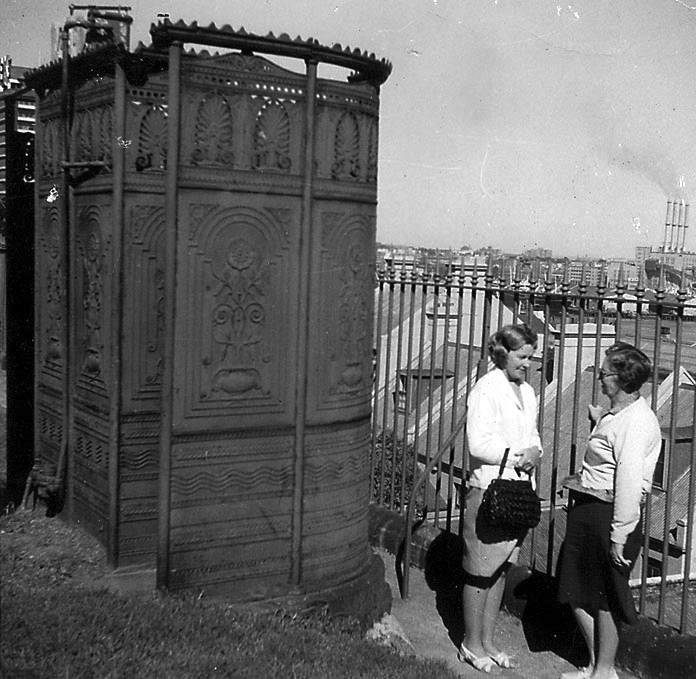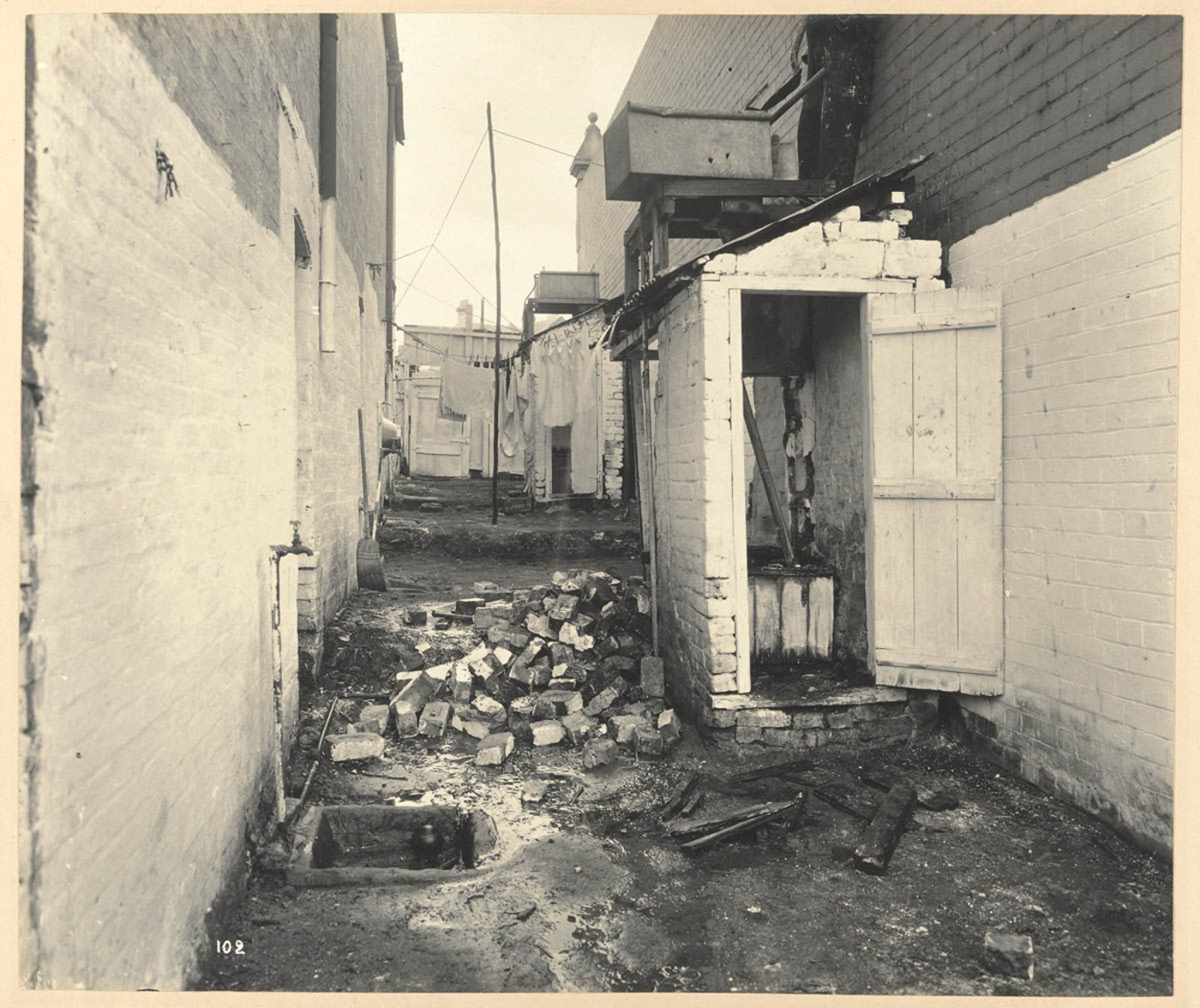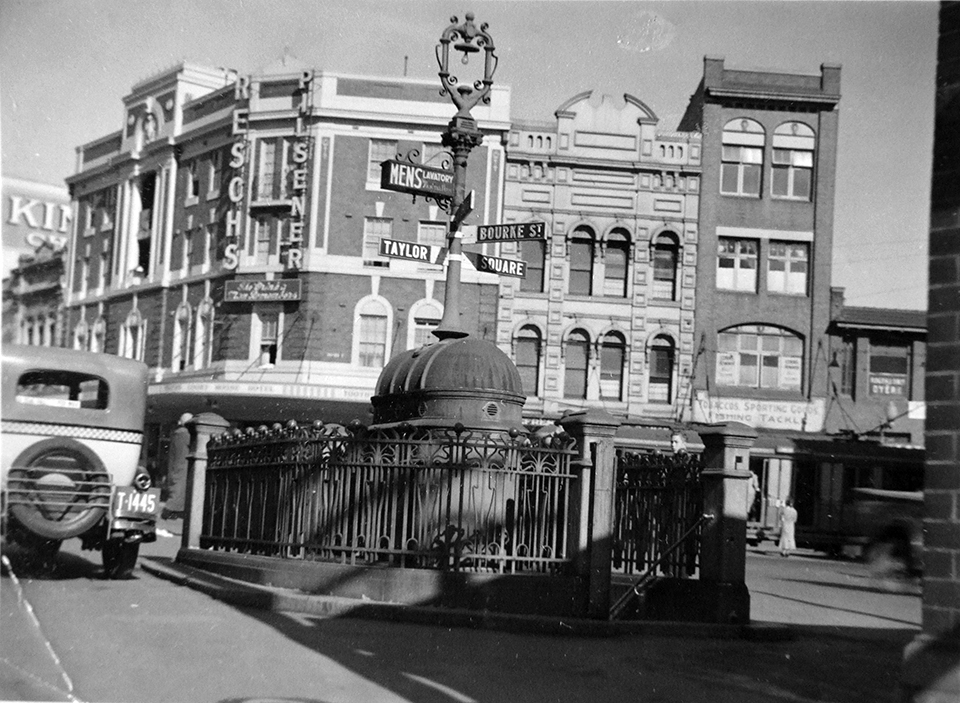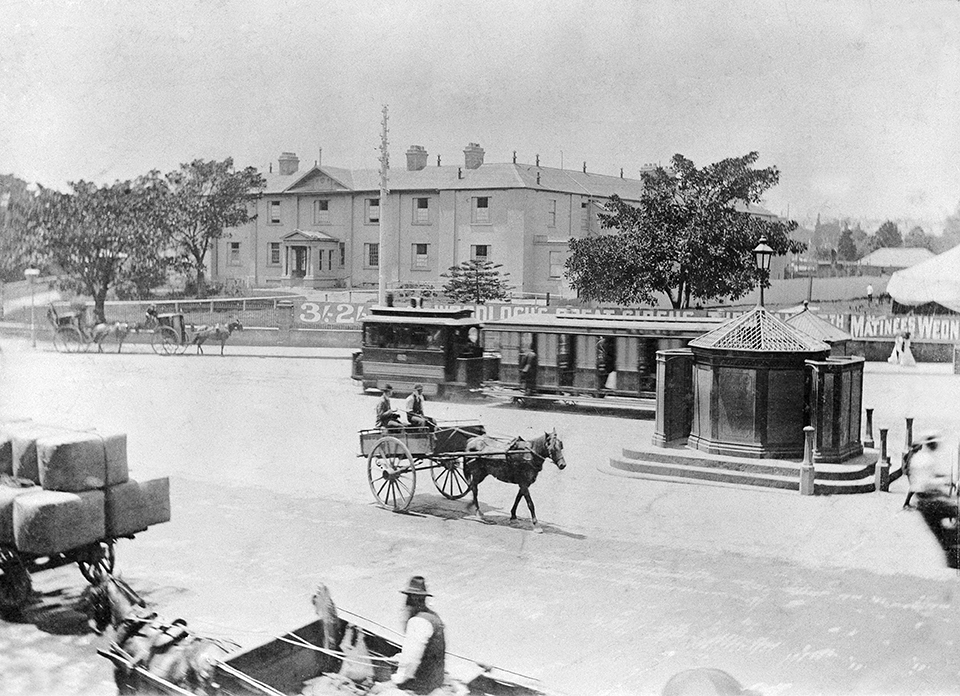
The 1880s ‘pissoir’ on Observatory Hill, 1968. City of Sydney Archives – CRS 34/2401/71
It’s a thing we all need, take for granted and is perhaps one of the more awkward topics to discuss, but when did Sydney first see public lavatories in its streets? This morning I spoke with Mitch on 2SER Breakfast about Christa Ludlow’s fascinating entry in the Dictionary of Sydney.
During the late 19th century social concerns were raised about public respectability, health and hygiene, and certain undesirable behaviour was being witnessed in Sydney’s streets. It was not uncommon to see men urinating in public because of an absence of public toilets throughout the city. A number of urinals or ‘pissoirs’ were installed in busy spots in the city during the 1880s, they were above ground and quite flimsy! One of these pissoirs can be seen today in The Rocks, underneath the Sydney Harbour Bridge, which was originally located on Observatory Hill.

Backyards, Exeter Place, Surry Hills in 1900. State Library of NSW – PXE 91
When bubonic plague hit Sydney in 1900, it became clear that many houses in the city’s inner urban areas had faulty sewerage connections and others had none at all and relied on earth closets and cesspits. The first underground public loo (for men only) opened on 24 May 1901 in Moore Street, between Pitt and Castlereagh streets.
There were others on Darlinghurst Road and at the intersection of Liverpool and Oxford streets, and finally one for women in Parker Street. One lavatory installed in George Street, was the first to use fire clay urinal ranges, which were considered more sanitary. One built on the corner of Bourke and Forbes streets in Darlinghurst in 1907 still survives today and was used as part of an art installation back in 2012.

Men’s lavatories built in 1907 in Darlinghurst, c 1934. City of Sydney Archives – 020\020262
In 1902, members of the Women’s Progressive Association waited on the Lord Mayor, requesting more ladies’ public toilets be installed. A contract for the first ladies’ above-ground lavatory was finally entered into in September 1910, for construction in Hyde Park. Though the toilet had fewer conveniences than the men’s lavatories, and by the end of 1914, a council publication revealed only £1,064 was spent on women’s public lavatories, while more than £15,000 was spent on public lavatories for men. One man wrote to the Lord Mayor in 1917, commenting on the ‘wretched state of affairs’ and ‘eternal shame’ that ‘the men are amply provided for…but a woman…is placed in a most awkward position’.

Central Square before building of Central Railway Station, 1906. National Archives of Australia – C4076, HN107
The toilets were opened between 5am until midnight, and two attendants worked shifts each day at each, with eight attendants employed in total. It seems many of these early public toilets had quite an ornate appearance, with white glass tiles, concrete floors covered with ‘arkilite’ or ‘ironite’ paving and polished wooden doors.
The early public toilets that survive today demonstrate Sydney’s urban street life at the turn of the 20th century. There was a desire to remove personal activities seen as undesirable from public view, but these underground toilets also reflected improvements in the city’s sewerage systems. The toilets today have come a long way, with self-cleaning lavatories above ground in places such as Wynyard and Hyde parks.
Check out the original article at the Dictionary of Sydney and listen to my segment at 2SER radio. For other interesting segments, see my Dictionary of Sydney project post and visit the Dictionary of Sydney blog.
